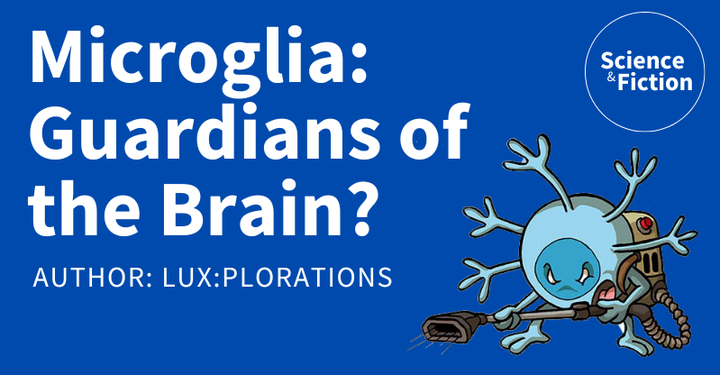
A comic about the role of the brain’s immune cells in Alzheimer’s disease.
Content warning
None
The comic


This comic was originally written in both English and German.
The publication
Fixemer, S., Ameli, C., Hammer, G., Salamanca, L., Huarte. O. U., Schwartz, C., Gérardy, J.-J., Mechawar, N., Skupin, A., Mittelbronn, M., & Bouvier, D. S. (2022). Microglia phenotypes are associated with subregional patterns of concomitant tau, amyloid-β and α-synuclein pathologies in the hippocampus of patients with Alzheimer’s disease and dementia with Lewy bodies. Acta Neuropathologica Communications, 10, 36. https://doi.org/10.1186/s40478-022-01342-7
Connection between story and game
Obviously there is no retrovisio-zoom-a-matic device in real-life. Nevertheless, scientists are able to look inside the brain of people with Alzheimer’s using different methods. In this paper scientists investigated brains that were donated by deceased patients. They were cut into very thin slices and then marked with a variety of compounds that light up when stimulated with a specific wavelength. By using compounds that bind to different locations researchers can then put meaning to the pictures they take under the microscope. This way they could see that a specific subset of microglial cells is shaped differently in patients with Alzheimer’s. Previous studies have shown that microglia become too active, which is depicted in this comic with Mirco-56 attacking his neuron friends.
The project
“Microglia: Guardians of the Brain?” is a science comic from the LUX:plorations series. Each volume offers several short comics about science and research in Luxembourg. Each story is developed in collaboration between doctoral candidates and local comic artists. The science comics are available for free and in five different languages (English, French, German, Luxembourgish and Portuguese). You can read and download them via sciencecomics.uni.lu.
LUX:plorations is published under CC BY-ND 4.0. This means that you are free to copy and redistribute the material in any medium or format as long as you give appropriate credit and don’t modify the artwork. LUX:plorations is supported by the Luxembourg National Research Fund (FNR), the Doctoral School in Science and Engineering (DSSE), the Doctoral School in Humanities and Social Sciences (DSHSS) and the Faculty of Science, Technology and Medicine (FSTM) of the University of Luxembourg.
The authors
The comic “Microglia: Guardians of the Brain?” was written by Sonja Fixemer, Shubhra Acharya, Anna Schmitt and Anouk Ewen, former doctoral candidates from the University of Luxembourg, in collaboration with Andy Genen, comic artist from Luxembourg. The group was supported by Oliver Glassl and Jessica Burton. Academic Supervisor: David Bouvier.